|
8/13/2021 0 Comments Men: A step-by-step guideto achieve 4 'oppa' hairstyles from BTS’ V to Hyun BinWhen it comes to great-looking hair, you can’t go wrong taking a cue from Korean pop stars and leading men. You might want to skip the barber for this round. Thinking it’s about time to switch things up, hair-wise? Guys, if you’re still getting that dated undercut or the same quick once-over with the hair clippers – yes, we think you’re definitely in need of a hair makeover and perhaps should consider going to a hair salon instead of the barber. Want a 'do that will up your style cred, as well as get you the right attention? Look to the heads of South Korea’s most popular idols and celebrities for inspiration. They’re setting the biggest hair trends for men in Asia, if not the world, according to Readen Chia, associate director of Chez Vous Hair Salon. CNA Lifestyle got him to pick out four “oppa” (older brother) hairstyles that a regular guy can also successfully try, and explain what goes into their making – whether they require a specific cut, hair product, hairstyling tools and techniques that, we assure you, won’t be too tough to execute. GONG YOO’S CURTAIN PARTED BANGS This hairstyle is all about the bangs, which can be parted at the centre or on either side of the hairline (best done in a 3:7 ratio) – no surprise why it takes its name from the drapes hanging over your windows. Obviously, a longer fringe is requisite for this look. At the same time, it requires some level of volume and texture – in other words, you’ll probably need a perm or, in lieu of that, decent DIY hairstyling skills. Chia noted that this hairstyle is usually worn with wavy, permed hair. “Unfortunately, this oppa hairstyle may scream ahjussi (uncle) for some, because not everyone looks good with wavy hair. In fact, some of us may look older than we actually are after a perm,” he said. Want a preview of how it will look on you? Chia suggested asking your hairstylist to create a temporary wave for you with hairstyling tools before you take the plunge. Chia also advised those with thinning hair or very fine hair to stay away from curtain bangs. “This hairstyle requires good hair density and thickness, otherwise, the parting will look overly wide and sparse,” he explained. Once you have a perm in place, it’s not too complicated to finesse the look at home. Here’s what to do:
V OF BTS’ MODERN MULLET This year’s trendiest hairstyle for men is, admittedly, not easy to accept for the average Singaporean gent. But that’s what trends are – they are not meant for everyone, but those with the requisite attitude to pull them off, and definitely jobs that do not have a strict dress code. Most people think of G-Dragon when the mullet is mentioned, but there are actually many other subtler takes on the hairstyle besides the extreme versions seen on the Korean rapper. In fact, Chia thinks that it can be a very versatile hairstyle for men. “The mullet can be customised to suit different hair types, and there are so many variations on the style. You can wear it longer at the back and with micro bangs for a punk-rock vibe; with a side fringe part or comma fringe (described below) for a K-pop-idol-inspired look; or not quite so long at the back and with a permed top and fringe for a preppy-ish look,” he explained. To achieve the version of the modern mullet you desire, Chia advised to go to your hairstylist with reference pictures, since it can be hard for the layman to describe or distinguish between the many different components of the hairstyle’s multiple variations. “Take note that the back of a mullet can grow out of shape quickly, so it may not be ideal for those with uneven hair growth or a slanted hairline at the back, and probably those who dislike making frequent trips to the salon for haircut maintenance,” he added. A pro of having a mullet is that it is easy to style at home, says Chia. Here’s what to do:
KIM SOO-HYUN’S COMMA HAIR Named after the punctuation mark because of the curled-inwards fringe, this hairstyle has been popular among male Korean idols since a few years ago and, according to Chia, is still in fashion now. The best thing about it is that you don’t need a perm – all you need is to know how to produce a C-shaped curl with either a flat iron or a hairdryer. It’s not too complicated for a guy to learn – ask your hairstylist for tips on how best to recreate the look he or she has given you. While comma hair used to be seen on Korean stars in a more precise, defined shape, these days, it’s more commonly worn in a slightly tousled, more-textured style. “Comma-ed” bangs are typically worn on the highly popular two-block cut, or its slightly mushroom-shaped cousin. Get the haircut right and you’re set for hairstyling success at home:
HYUN BIN’S SLICKED-BACK HAIR A classic hairstyle for men, this style channels a smart, dressy vibe, which explains why Korean celebrities love to sport it when attending award ceremonies. Chia pointed out that you’d hardly see any guys with slicked-back hair on the streets in South Korea, however, because many of them actually consider it to be a dated hairdo that makes them look older than they really are. “For most Korean men, a visible fringe is an important ‘tool’ for appearing youthful – a trait not found in slicked-back hair,” he added. Still, it’s an undeniable fact that the stars look great in the slicked-back look, and you can too. Their secret? Instead of pulling their hair from the front and straight to the back from the hairline, they go for a side-swept variation with a parting. This hairdo will suit just about any type of hair, although it may look more modern if your hair is cut shorter on the sides and back of the head. “This is the easiest men’s hairstyle to style at home,” said Chia. For an updated take, leave some strands of the fringe loose and tousled for a “carefree” look.
From CNA Lifestyle
0 Comments
7/25/2021 0 Comments What Does Blue Shampoo Do?When you color your hair brown or blonde, you might not like the warmth that comes through your hair color. Going for a cool-toned look, it’s important to have an at-home care routine that will help you neutralize brassy tones and keep your color free of unwanted orange shades. If this sounds like something you struggle with, find out more about what a blue shampoo is and how to use it properly to avoid having a green hair mishap. 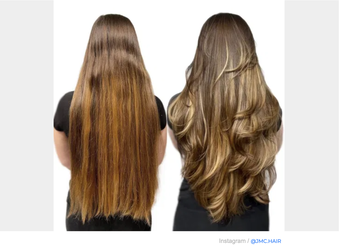 What Does Blue Shampoo Do? Blue shampoo is a toning shampoo that contains blue pigments. The latter deposit onto the hair with each wash, neutralizing any warm underlying pigments. If you have red or orange tones in your hair, blue toner will not give you a blue tint: because blue and orange are opposites on the color wheel, blue pigments will do corrective coloring, neutralizing orange and keeping your hair color cool. 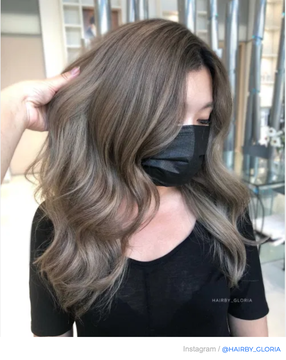 Who Should Use Blue Shampoo? Blue shampoo should be used on lightened and highlighted brown hair and is ideal for anyone trying to maintain a perfect caramel, dirty blonde, and ash brown color. It can also be used on natural brunettes but the effect might not be as drastic. Here is a color science behind it. Each hair color has a variety of underlying warm pigments that always come through when the hair is being lightened to a new hair level. Medium to light shades of brown hair naturally contain warm undertones such as red and orange, and they almost always come through when going through a color process. In this case, you will most likely benefit from a blue shampoo that will help you reach or maintain the desired brunette hair color. 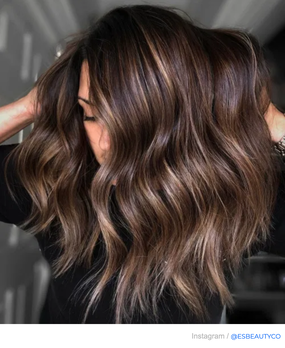 For highlighted and blonde hair, the results of using a blue pigment may be different and, potentially, less appealing. It is not recommended for golden or yellow-based blondes because blue shampoo can add a green tint to the hair. Remember, when yellow and blue mix, it creates a green color – a hair color mistake that is very difficult to correct. Thus, when your hair is highlighted to yellow, you should be very careful with blue toners and blue shampoos. If your hair is highlighted to a pale yellow or almost white blonde, a blue shampoo can give it a slight blue tint. Thus, when you seek an icy blonde color, it is key to use a silver blue toner instead of a blue one. It will neutralize the underlying red and orange pigments in your hair and enhance the icy tones.  Blue Shampoo vs Purple Shampoo Purple shampoo and blue shampoo work in a similar way, canceling brassy tones in your hair color. Because purple and yellow are opposites on the color wheel, violet pigments cancel out brassy yellow tones, which makes it great for making blonde hair more neutral. However, the purple shampoo will not work as well for caramel highlights or ash brown hair, as brassy orange is best neutralized by blue pigments. 5 Best Blue Shampoos to Choose If blue shampoo sounds like something you would benefit from using, look into purchasing one of our favorite ones:
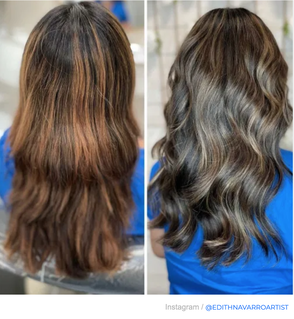 How to Use a Blue Shampoo? Whatever your desired look is, most toners are demi-permanent colors. Thus, a color stays looking its freshest for up to 3 weeks, and you can expect to see warm tones coming back through towards this time. Of course, that depends on how often you shampoo your hair, how much you are exposed to the sun, and the quality of your water. If you want to avoid the warm tones, invest in a blue shampoo to use in between hair appointments at home. You likely won’t need to start using a blue shampoo until week 3; however, feel free to add it to your hair care routine whenever you notice a lot of unwanted brassy tones coming through your strands. Once you feel it is time to start incorporating it into your hair care routine on a regular basis, use it up to two times a week, which is generally enough to see the tonal change in your hair. First things first, there’s something we need to make very clear. As you’ve probably seen with many a male celebrity, there is a world of difference between simply deciding not to cut your hair one day, and growing your hair out with actual effort. And yes, you can tell the difference between the two. There are a few things you can do to make sure you don’t fall into the former category though, starting with…  Get As Many Opinions As Possible Before you decide to go full-Fabio, do a serious evaluation as to whether the product of your spent time and effort is actually gonna look good or not. Take a look in the mirror, use a snapchat filter, ask your family, ask your Mrs, ask your mates, ask anyone how they reckon you’d look with long hair. Also, don’t be afraid to cut it back if you don’t think it’s going to go as well as you thought. There’s no shame in trying, but we can’t all be Chris Hemsworth.  Match Your Style To Your Features There’s a few things that can determine just how good your mane is likely to look, and they all rest on your face. Having thicker hair in certain places (for instance a heavier top and thinner sides, or vice versa), can help accentuate or balance the features of your mug, meaning it’s important to get everything proportioned correctly. If you have large features (big nose, big lips etc.) or a rounder face, go for bigger, larger, more textured styles to soften them. Early Mick Jagger is a good example. If you have smaller features and a thinner face, a thinner, longer style is probably more suitable. Think Zlatan or Jared Leto.  Adjust Your Style As It Grows Of course, before you reach a glorious mane you’re going to go through months of awkward lengths, styles and unruliness that’ll make you question whether or not you want to continue. The answer to this issue is twofold. One, make sure you’re giving your hair the best chance to grow healthily by eating a decent diet and using conditioning products as it grows. Two. Don’t be afraid to get a little product involved to keep things looking presentable. It’ll take time for your hair to reach a long enough length to weigh itself down and look properly natural, so you may have to compromise for a while. Once It’s Grown, Let Your Barber Take the Reigns If you’ve grown your hair out right, it should need as little maintenance as possible to make it look good. If you want to blow dry it, go for it, but lay off on the styling products, unless of course you’re trying out for a Motley Crue tribute act. The hallmark of a grown-out hairstyle that works is that it should look good sitting naturally. If it doesn’t, then let your barber fix it or consider a change of style altogether. That being said, take care of your hair. Short hair might let you get away with being a little more relaxed on the shampoo and conditioner, but as any girl will tell you, long hair won’t afford you that luxury.  Always Keep It In Check Keeping your hair healthy often boils down to making sure you’re touching it as little as possible, but depending on how long you decide to go, you’re gonna have to figure out ways to make sure it’s not going everywhere when you’re playing sport, doing manual labour or even just walking in a windy day. The key here is to experiment with what suits you. Take as much inspiration as you’d like when it comes to buns, ponytails, headbands, bandannas or whatever, as long as you’re avoiding the top knot. Need More Motivation… Growing hair out, men? Check out these 55 medium length hairstyle ideas for men. From DMARGE
When we reach for a new food or skin care product, many of us turn to Google to find out what is in it. We want to know what makes it “good” for us or if it will “work” to make us look better and more youthful. Unfortunately, most people do not do this when picking out hair care products, and our scalp is often given little thought. Do you know what shampoo really is or why you even use it? Did you know you have a choice and there are many shampoo alternatives that give better results? Find out more about the no-poo method and why ditching the shampoo is not as crazy as it sounds. What Does the No-Poo Method Even Mean? For those of you that may not have heard of the no-poo movement, it is the choice to not use a shampoo that contains harsh detergents to cleanse your hair. Whenever I approach this conversation with a new client, the majority of the time they are unaware that using traditional shampoos means putting detergent on a scalp and stripping the oils that a scalp and hair need to be healthy. Over the years, more and more people have created their own techniques for healthier scalp cleansing and are actively falling into the no-poo crew. Here are some compelling reasons why you should, too. Why Switch to the No Shampoo Hair Care What made you buy the shampoo and/or conditioner taking up space in your shower? Was it the way it lathers up and releases a pretty scent, was it the cool packaging that hooked you, or did someone tell you that you needed to have it? What if I told you that it lathers because it contains detergents that are not supposed to be on your scalp and scents that are more than likely artificial and irritants? Detergent is an amazing cleaning agent. It is great at stripping away everything on your scalp, but it doesn’t pay any attention to what is being stripped away. Think of the things you use detergent on. Clothes, cars, floors… Now imagine putting shampoo, which has detergent, on your body or your face. At this point, you might give me an uneasy look. Hear me out though, you have immediate reasons as to why you would not do this: it would dry your skin out, be too hard, make you break out, etc. Why then do you think it is safe and necessary on your scalp? Is the skin on your scalp really that different from any other skin on your body? The answer is no. However, what makes it different offers more reasons as to why you don’t want detergent touching the scalp. Your scalp has a protective layer of oil called sebum. Sebum is the body’s defensive layer to protect your scalp. Shampoo (or rather detergent) is such a “great’’ cleanser that it strips this away. This sends signals to your scalp that its defensive layer has been removed and it then goes into overdrive trying to get it back. This can lead to overproduction of oils (oily scalp) and the inability to make up for the loss (dryness). As a result, your hair feels brittle, dry, and rough. What happens next? Well, the makers of shampoo strategically lean into this because they now have created a need to mask the damage that has been done, and here is where conditioner, masks, and treatments come into play. These products bandage up the damage that has been caused and now you are reliant on a second and possibly third staple product in your routine. If you do not strip the sebum from the scalp and rough up the cuticle, there is no need for conditioners because you are not damaging the hair, to begin with. Shampoo being bad for your scalp should be enough reason for anyone to seek out other options, but an even stronger argument would be for those individuals who color or highlight their hair. Any shampoo, regardless of being “sulfate-free”, “paraben-free”, “organic”, “natural”, or labeled “color-safe,” will strip your color. If it lathers, it has detergent and detergent will strip color and toner and dull highlights. Those buzz words listed above just mean that your shampoo is a step above cheap drugstore options. Your color is most protected when no detergent is introduced to your haircare routine. Shampoo Alternatives When you choose to use no shampoo in your hair, you can take up one of many no-poo method variants that have been developed out of the need for people to cleanse their hair without using detergent. These include using only water, rinsing hair with DIY creations, or using cleansing conditioners and creams. Let’s explore the most popular ones:  H2O Only The first and most extreme method for opposing shampoo is to stop using any form of cleanser altogether and just use water. This is one I would not recommend. Dirt and build-up occur on the scalp from the environment every day. When you add styling products to that, you will eventually feel dirty and your hair may even start to smell. This will also clog the hair follicle. You do need to clean the scalp in some way to keep your scalp balanced and stimulate hair growth and overall health.  DIY Shampoo Substitutes Another popular route among individuals who embrace essential oils and natural hair remedies is DIY no-poo concoctions. I am all for this! Still, if this appeals to you, I do encourage you to do research on hair types and each oil that Pinterest or your favorite blog may tell you to incorporate. Certain oils such as coconut oil are not good for all hair types (it can cause breakage on color treated and fine hair). Many DIY versions use Apple Cider Vinegar, which is great for removing build-up. You can mix a couple tablespoons of ACV with water and apply to the scalp; scrub and rinse. You should follow this with a form of conditioning, as ACV is acidic and can dry the hair out if used alone.  Conditioners This is the method most people associate with the no-poo method. With this approach you don’t use a shampoo, hence the term “no-poo”, and go straight to a conditioner. Many of these products are marketed towards thicker, coarser, curly textures, and The Curly Girl Method encourages to take up this routine. The downside to this method is there is no cleansing component and it will not be suitable for all hair types. If you have tried a traditional no-poo and been unsuccessful, it is probably because you need a specific cleansing component.  Cleansing Creams and Conditioners My go-to method is using a strategically created cleansing cream. What makes this different from the conditioner-only method is that it has a balance of cleansing and conditioning properties. This makes it a great option for all hair textures and densities. The only thing I will use on my clients, husband, kids, and my own hair is New Wash by Hairstory. Cleansing creams can take the guesswork out of figuring out what is needed to effectively wash and cleanse hair. Still, do not rely on the labels and be sure to look into the ingredients when selecting a cleansing cream or conditioner. Silicones and surfactants are components of many products that should be avoided. New Wash, in particular, uses aloe vera and essential oils to gently remove dirt and impurities from hair while not disrupting the scalp’s natural oils or stripping away color. No-Poo Method Mistakes to Avoid To make the no shampoo method work, be sure to avoid these common mistakes:
If you avoid these mistakes and commit to a gentle detergent-free hair care routine, good hair results are sure to follow. My clients know they have the choice to use whatever they wish to care for their hair; however, if they chose to use shampoo, I cannot guarantee longevity and they will need to see me more frequently for maintenance. If you are curious about making the switch, I encourage you to try it out and commit for one month. Whether you have fine hair or coarse hair, virgin or color-treated hair, curly or straight, ditching shampoo and finding the best no-poo hair cleansing method for you will greatly improve the health and appearance of your hair. Feel free to contact me with any questions about no-poo or discounts for the no-poo products. from The Right Hairstyles Hair by Brian's Recommendation  Hairstory: New Wash You can buy this directly from me online. You will receive 20% off your first purchase as well as free shipping when they use this direct link. All you have to do is click on this link, create a customer account, and their system will automatically discount you RIGHT before check checkout - no coupon or referral code necessary! Product Info  Scalp Massager Shampoo Brush About this item * Scalp Massager for All Hair Types -- Deal with curly, straight, thick, thin, dry hair or oily hair at ease. Scalp scrubber brush is perfect for you and your family. * Building a Healthy Scalp --Fixing the hair problem(oil, dirty, itchy) with a simple scalp massager and gently brush with shampoo. * Dual-use Scalp Brush: remove excess oil for deep cleaning when wet brushing, promote blood circulation, stress release&ease your mind with dry brushing.  Hyalogic Biotin Hair Thickening Spray w/Hyaluronic Acid for Thin Hair and to Promote Thicker Fuller Looking Hair and Healthy Scalp About this item
Affiliate Disclosure:
All products featured are independently selected by Hair by Brian. However, when you buy something through these retail links, I may earn an affiliate commission. Keep your hair happy and healthy all summer long using these natural, chemical-free methods. Natural hair rules in the summer! Now is the season to let go of perfect, sleek hairdos and embrace that loose, natural look. Learn how to protect your hair from the heat, sun, and humidity without turning it into an endless battle. 1. Cover up! Use a scarf or hat to cover your head when you’re out in the sun. Not only does this provide extra UV protection, but it also helps your scalp to retain moisture. A hat reduces damage caused by wind, especially if your hair is prone to tangling, and protects colour-treated hair. 2. Put your hair up in loose, comfortable styles A messy braid is ideal for keeping your hair under control and minimizing exposure to the sun. Tight hairstyles can be damaging because they tend to pull and tear hair, especially if your hair is dry from the summer heat. 3. Wash less often Frequent washing strips your scalp of its natural oils, which in turn stimulates additional oil production and makes you feel the need to wash it even more. Try just rinsing in the shower after a day at the beach or pool, and see if that gets rid of some extra oil. Use a homemade or natural dry shampoo, such as cornstarch, in place of regular shampoo to go a bit longer without washing. Another quick fix is to dab a cotton ball soaked in witch hazel along your scalp to dissolve excess oil. 4. Reduce the heat Try to blow-dry your hair as little as possible. It is already exposed to a significant amount of heat on a daily basis in the summer, and it will probably air-dry quickly anyways, so give the blow dryer a break and go au naturel if you can. Avoid flat-irons, too, as they will do further damage to already-dry hair. Plus, a sleek hairstyle only makes that frizz stand out more. 5. Spritz & Seal Make a concoction of water, aloe vera juice, and avocado oil. Keep it on hand to spritz whenever a bit of moisture and/or control is needed. Another good option is argan oil mixed with water. 6. Condition always Rinse with apple cider vinegar diluted in water for a quick natural conditioner. Use some coconut oil or shea butter (careful with this, since it can be heavy) to smooth, de-frizz, and moisturize your locks after washing. The oil will give some shine and, if you have wavy hair, create natural, air-dried curls. Try a natural deep conditioning treatment once a week to get that extra bit of moisture into your hair. 7. No more swimmer’s hair If you’re a blond who turns green after a dip in the pool, try rinsing out your wet hair with 1⁄4 cup apple cider vinegar and 2 cups water to get rid of discolouration and dullness. It helps to get your hair wet before entering the water because then it won't absorb as much chlorine. 8. Add some sunscreen There are shampoos that contain UV protection, but most of those are chemical-laden, conventional shampoos that I’d recommend avoiding. One quick way to add some protection is to run your hands lightly through your hair after applying sunscreen to your body. 9. Try a hot oil rinse Coconut, olive, and avocado oils are good at penetrating the hair shaft. Shampoo hair as usual, then work in oil from ends to roots. Rinse, then condition as usual. Your hair should feel moisturized afterward, but not greasy. 10. Fake that beach look if you haven't been there One blogger recommends this homemade sea salt spray, made with 1 tsp sea salt and 1 tsp coconut oil, mixed with water in a small spray bottle. Spray and scrunch to get that desirable wavy beach look. The coconut oil will counteract the dryness of the salt. 11. Use a wide-tooth comb instead of a brush Avoid pulling anything through your hair when it’s wet, since that’s when it’s most susceptible to breaking. Wide-tooth combs are most gentle for untangling hair, as brushes can pull and tear when they snag strands. From Treehugger
|
Hair by BrianMy name is Brian and I help people confidently take on the world. CategoriesAll Advice Announcement Awards Balayage Barbering Beach Waves Beauty News Book Now Brazilian Treatment Clients Cool Facts COVID 19 Health COVID 19 Update Curlies EGift Card Films Follically Challenged Gossip Grooming Hair Care Haircolor Haircut Hair Facts Hair History Hair Loss Hair Styling Hair Tips Hair Tools Health Health And Safety Healthy Hair Highlights Holidays Humor Mens Hair Men's Long Hair Newsletter Ombre Policies Procedures Press Release Previous Blog Privacy Policy Product Knowledge Product Reviews Promotions Read Your Labels Recommendations Reviews Scalp Health Science Services Smoothing Treatments Social Media Summer Hair Tips Textured Hair Thinning Hair Travel Tips Trending Wellness Womens Hair Archives
July 2025
|
|
Hey...
Your Mom Called! Book today! |
Sunday: 11am-5pm
Monday: 11am-6pm Tuesday: 10am - 6pm Wednesday: 10am - 6pm Thursday: Closed Friday: Closed Saturday: Closed |


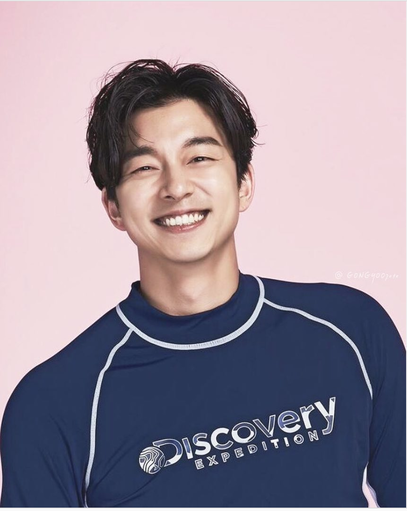



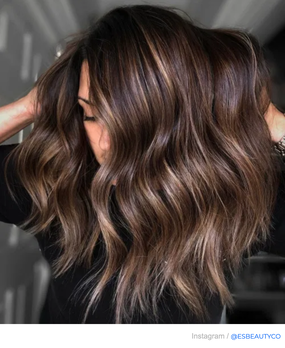

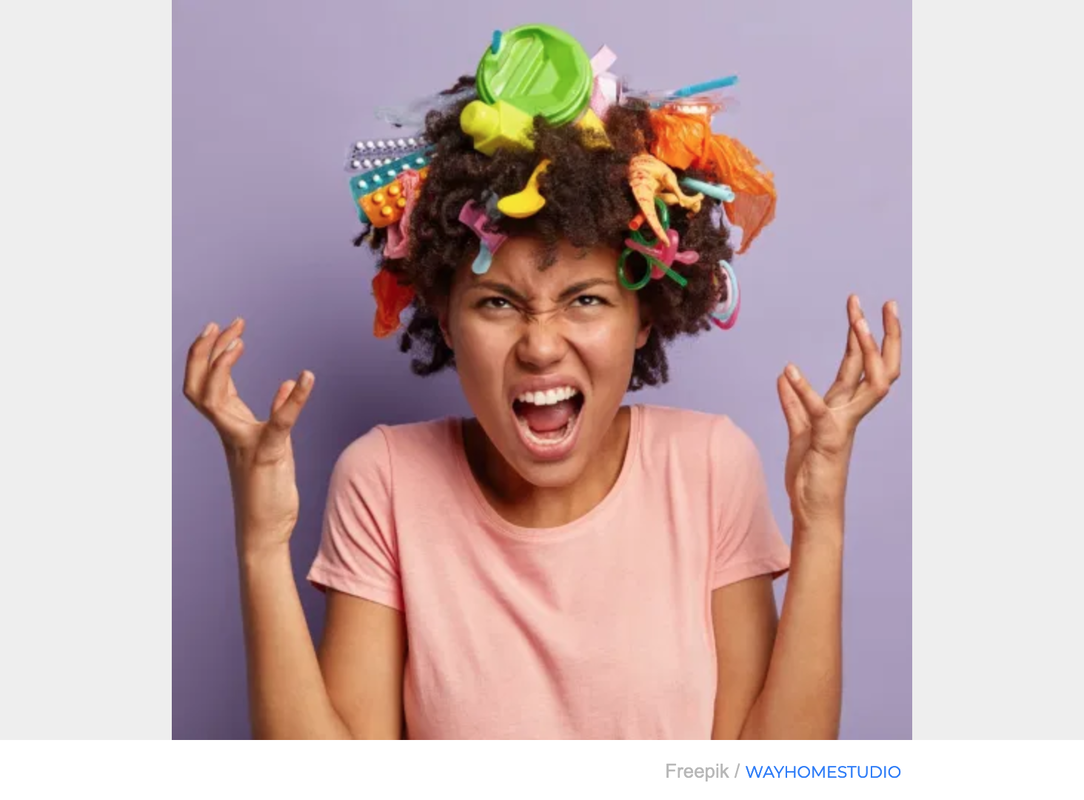






 RSS Feed
RSS Feed